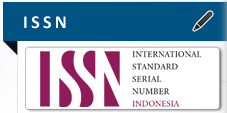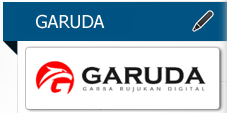Analysis of Seawater Intrusion Based on Groundwater Hydrogeochemistry in the Jakarta Groundwater Basin
Abstract
Excessive groundwater extraction can result in the intrusion of seawater inland, contaminating the aquifer conditions in the Jakarta Groundwater Basin or commonly known as seawater intrusion, impacting the use of water for daily domestic and industrial needs. Therefore, an analysis is conducted to generate the seawater intrusion spread zones using a groundwater classification method on 54 samples from the confined aquifers of the Jakarta Groundwater Basin. Based on the analysis results of classified groundwater facies using the Piper diagram, facies such as CaHCO3, NaHCO3, MgHCO3, NaCl, and NaSO4 are identified, with CaHCO3dominating from west to east and NaCl in the northern region of Jakarta, resulting in a groundwater salinity classification of 2, ranging from fresh to brackish water. A Na/Cl ratio <1 may be attributed to seawater mixing into the aquifer, possibly due to low rates of rainwater flushing through percolation. Conversely, a high Na/Cl ratio indicates interactions between groundwater and rocks through hydrolysis and acid-base reactions. Besides the Na/Cl ratio, a CL/HCO3 ratio <0.5 indicates no influence, 0.5 to 6.6 indicates slight to moderate influence, and >6.6 indicates high influence. Moreover, seawater intrusion classifications are divided into four categories: freshwater, slight seawater intrusion, moderate seawater intrusion, and relatively high seawater intrusion. This research is also expected to provide further evaluation, especially on an annual basis, particularly in the North Jakarta, East Jakarta, and Bekasi Regency areas.
Keywords
Full Text:
PDFDOI: http://dx.doi.org/10.34126/jlbg.v15i2.518
Refbacks
- There are currently no refbacks.

This work is licensed under a Creative Commons Attribution-NonCommercial 4.0 International License.









